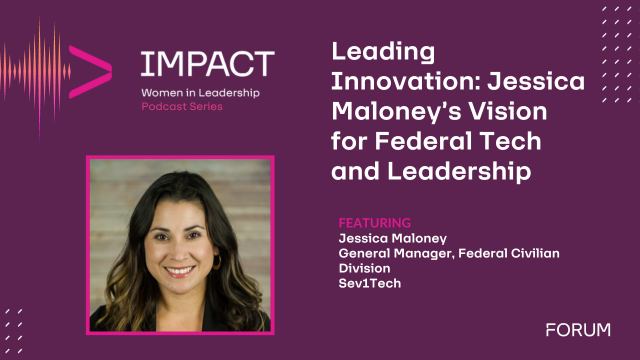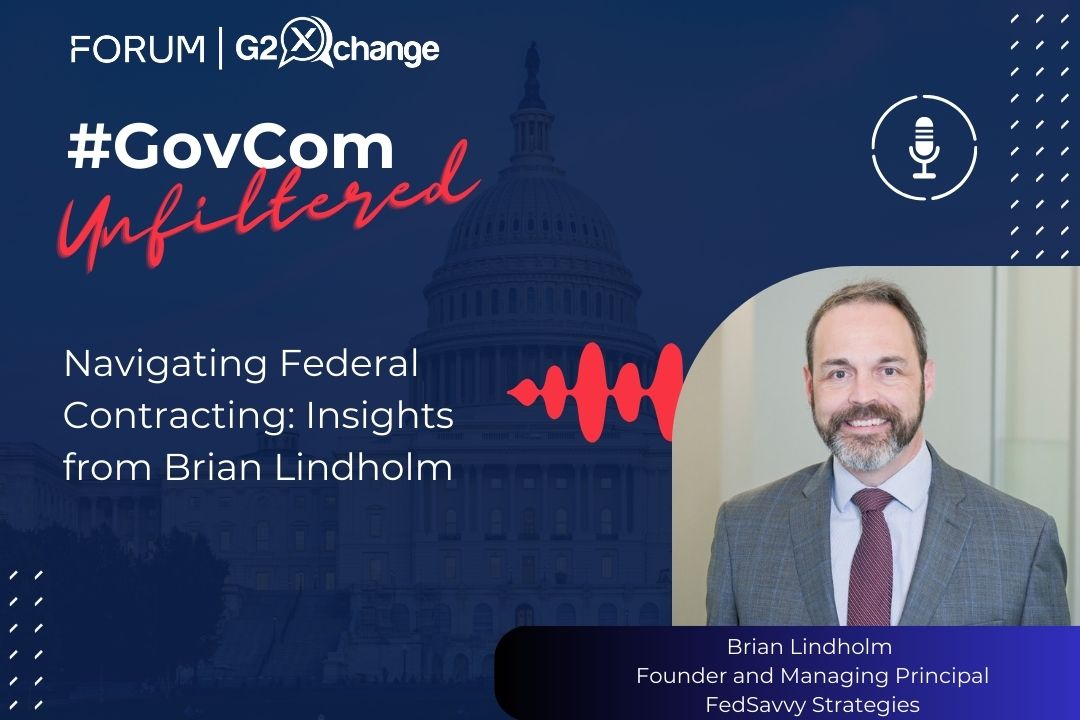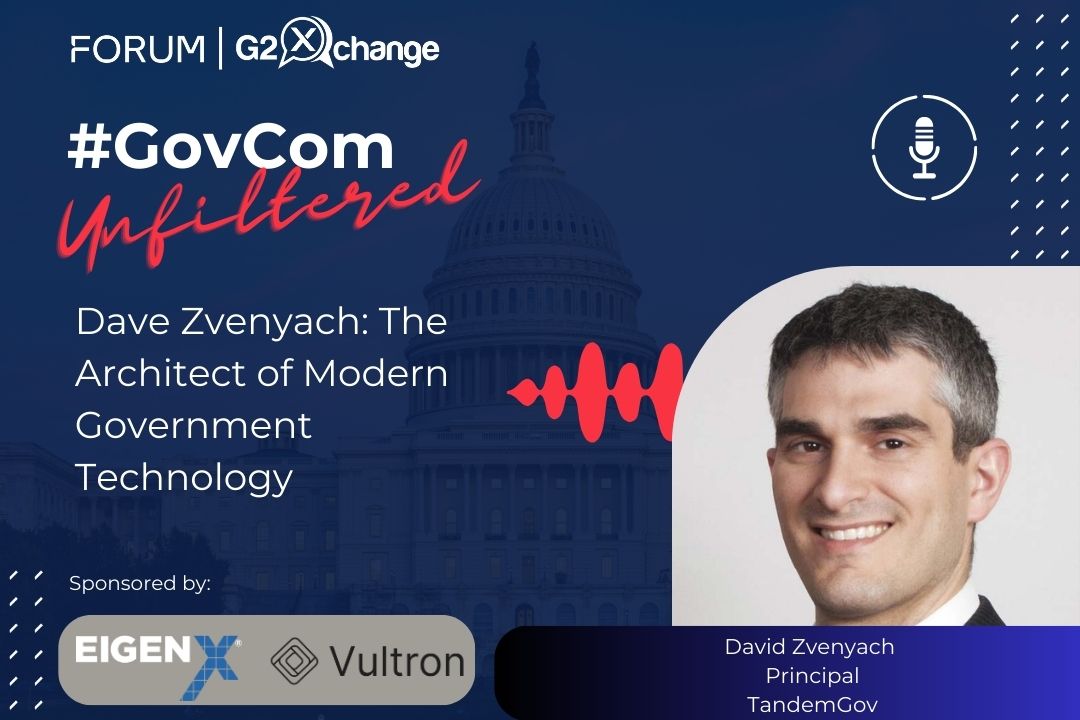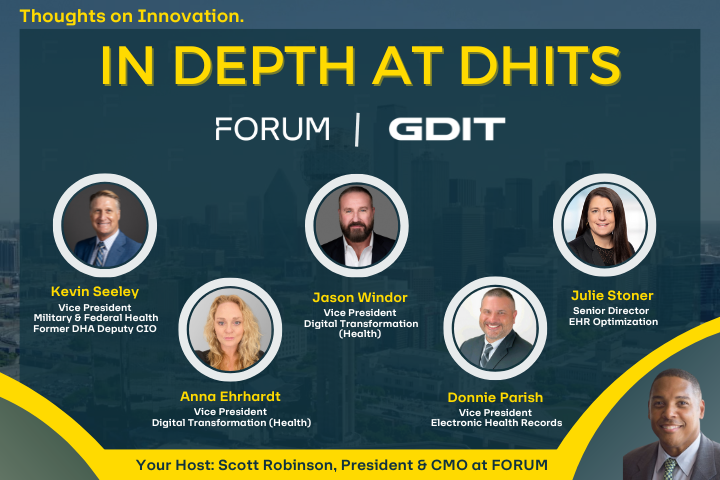FedHealthIT’s President, Susan Sharer, recently spoke with Leidos’ Chief Medical Officer (CMO), Don Kosiak, MD, an emergency medicine physician by training who still practices clinically. Here he discusses the future of Healthcare, what needs to change, and the innovation needed to get there.
How is Technology Transforming Healthcare?
We are seeing continuing transformation in Healthcare. Most of it is IT related, meaning technology is starting to make a huge impact on the lives of patients and their families. Bringing together disparate data from many sources about the patient and injecting this knowledge into the clinical experience is really changing the way that we, as Healthcare providers, interact with patients and treat disease.
Opportunity
The challenge now is how we manage the abundance of data, how we make the data meaningful, and how we inject the data into the clinical workflow to the patient’s benefit. Today, the best we can do is to provide thousands of dashboards, reviewed in a manual way, populated with data that is already 60 to 90 days old or that has no context. The solutions going forward can’t be more applications and more data. They have to be something more—the data has to be useful. This is one of our main focuses at Leidos, making the right data readily available at the right time and in the right setting to help the patient, the family, and the provider community.
Opportunity
The second major opportunity is in the area of systems integration. There seems to be an application for almost everything in Healthcare, but there’s not a true systems integration plan or thought process behind how all the applications actually integrate into the patient’s life or into the clinical workflow. I believe it needs to be more like flying an airplane with advanced avionics. The pilot has a glass cockpit. Data is coming in from literally hundreds of sensors inside the plane, outside the plane, from the ground, from satellites. The pilot, however, doesn’t see thousands of dials and switches—she only sees the information she needs to determine what is going on now, in real time, how best to react to it, and then how that reaction changes the situation. She gets this information from algorithms that engineers and pilots decided on as “best practice” during the cockpit’s design.
We haven’t gotten to that level of sophistication in Healthcare yet. We still have the equivalent of thousands of different dashboards and applications sitting in front of us. We have to look at all of them, trying to make sense of it all, usually with data that is more than 60 days old and that we’re not seeing in context. Health decisions made without context are not likely to be helpful to the patient’s condition. Worse, we likely pay someone to manually extract all this data into a spreadsheet so that we can actually use it.
Meanwhile, we ask the patient and family members to download a specialty app for each disease state. One app is great for diabetic management, but the patient also has congestive heart failure and high blood pressure, requiring other best-of-breed apps and care management teams. Soon the patient has nine apps, seven patient portals, and five care teams—likely providing conflicting information—and confusing in terms of which portal needs which information. That is not sustainable. To be useful, transformation has to be about integration of the data to one pane of glass—showing the patient the information that will help him understand and live with his condition. We can get there—we must get there.
What do You See for the Future of Healthcare?
For the very first time, we’re reaching the point where we can make the technology bend to the clinical workflow, rather than the clinical workflow having to bend to the technology. Because of this, I believe the future is about improving quality and timeliness of care integration. It’s about coordination to form personalized care plans. It’s about using the massive amounts of data to care for and inform the individual patient, with the right data readily available in the workflow so the clinical teams can use it to treat the patient.
Challenge
Health systems and providers know what they want to do to deliver high-quality care. The problem is that the tools and technology in place today are not geared to help them deliver highly reliable and repeatable care.
Challenge
Another challenge is that the helpful data doesn’t just reside in the electronic health record. It’s in your personal data and your social behavioral data—how you spend your life, your activity level, your diet, your neighborhood, your support system. The data might also be in your financial and your insurance records—which determines what you qualify for and what benefits you receive.
Challenge
Yet another major limitation is disparate data. Doctors and health systems don’t always communicate to each other about an actual plan of care and what that roadmap looks like for the patient outside of the current office visit. Integrated technology can improve all of these issues.
An Example of the Longitudinal Journey
The importance of sharing the longitudinal journey may not immediately sound beneficial to some. But consider the case of a patient who comes into a doctor’s office to ask about a lump in her breast. Maybe it’s something or maybe it’s nothing. The patient doesn’t know, and has absolutely no idea what comes next—visits to multiple providers, to specialists, to imaging centers, and so much more. Biopsies and other tests are scheduled and conducted—each followed by days of waiting for results. During that time, the patient is left wondering, “what if?” and “what comes next?” If worse comes to worst, additional treatments, such as surgery, radiation, and chemotherapy, are in store. Today, the patient and the family must coordinate most of the visits, follow-ups, lab work, and imaging center appointments. Different providers on different systems need different information, and the patient must navigate this complex system—all while dealing with incomprehensible information and with the actual illness itself. Not only will it become evident that care coordination is lacking—it will likely be a truly terrifying experience. So much so, that a patient may neglect to follow up in a timely and proper manner.
We can do better. We can provide the longitudinal roadmap and the coordinated data to help patients and families better understand the process and the journey. We can provide a personalized plan for the individual patient, so that she knows the critical steps through a specific episode of care and the long-term steps and options—and which ones are really meaningful. Today, that rarely exists for the patient or the providers, but I can see a true systems integrator sorting out the data, turning it into the information the patient needs, and solving this challenge.
Another Look at the Longitudinal Journey
Here is another simple example. If you have a chronic lung disease and you live in an area with high humidity during the summer, then it probably makes sense that your doctor might prescribe—and your insurance might pay for—an air conditioner. Wouldn’t that be easier and cheaper than having you go to the emergency department seven times in 3 months because you can’t breathe?
Opportunity
Technology could tie together benefits information, social and behavioral determents, and future care steps and coordination to help the patient make informed decisions about what to do and what comes next in the journey. This is the future of Healthcare.
Why is Data Normalization Important?
Historically for the last decade, with meaningful use and other incentive programs, we’ve put in these big electronic systems that have really revolutionized the way we care for patients. These systems have collected huge amounts of data. It helps that we’ve gotten all of this data into one place, but it still has to be normalized so that you can do comparisons and data analysis. When another office calls the radiology test results positive or negative, does my system also call it a positive or negative? Does a value of 14 in my system mean the same thing as a value of 14 in your system? When I call a drug by a certain name and dosage, do you use the same nomenclature in your system?
Opportunity
Once the data is normalized, then the next important step is to manipulate it. This is where Artificial Intelligence (AI) and machine learning can prove beneficial to Healthcare of the future. The algorithms depend on clean, normalized data to be able to “learn”. If we continue to mature in Healthcare, 3 to 5 years down the road, the average Healthcare provider and health system will start to be able to predict what might happen to the patient, based on that patient’s history and those of patients that have been in similar situations.
Opportunity
The real near future is to orchestrate care with this normalized data so that we can deliver on our promise that we defined as best practice. Today, we can determine the care journey the patient needs and we can follow the critical path to gain efficiency and to improve outcomes. We can provide near-real-time alerts and escalations when the patient steps off the best path. Most systems are not designed to verify that the patient continues to follow the orchestration of care along the entire journey—inside and outside of the doctor’s office. While the average patient might spend 10 or perhaps 15 hours a year in the doctor’s office, that patient has to manage care on his own for another 8,750 hours. As a physician, I can now say, “This is the way I care for my patients; this is the way I believe is the right way for you, my patient.” I can set up the system to alert me—and the patient—immediately when he or she is off target or off track. And the patient also has a view of that longitudinal journey and gets alerts, and might say, “Doctor, you told me when this happens, I would get a phone call” or “I know I’m supposed to have this follow-up test because I can see it on the roadmap.” This kind of care coordination could be really impactful. I think that is the next big transformation.
How is this type of evolutional change best executed?
Change is difficult for humans and for institutions. The most important part of change management is a clear and compelling reason for the individual or system to change. It can’t be that the Government, the health system, or the company thinks we should change. The individual has to feel that there’s a reason to change—has to see a benefit in the change. As a company specializing in systems integration, Leidos wants to help others see that change is needed and will be beneficial, but also wants to help get through the change as quickly and seamlessly as possible. For change to take place, there needs to be an understanding of how the industry does things today, what that looks like in the future, how big a gap is between the two, how we help close that gap, and, most importantly, why the change is needed.
A Model of Change
As an example, in 2013, the U.S. Defense Department took a step that was viewed, at the time, as bold and brave. They began to plan for and implement an enterprise-wide electronic health record for the Department of Defense (DoD). At the same time, they began the enormous task to standardize the way care was provided across all the services and eliminate, when possible, variation. Combining these efforts at the same time was not a standard practice in the industry. Now that DoD hospitals across the various services have gone live with the MHS GENESIS system, everybody in the industry, both Federal and commercial, have noticed how meaningful that combined effort has been for patients and their families. And I suspect they are all leaning forward, saying, “Wow, I can’t believe you did that, please tell us how you pulled that off.”
I have had the pleasure of being involved in many “go-lives” for electronic health records over the last decade, both as a provider and as a physician champion. The one I suspect we will remember the most is the launch of MHS GENESIS that occurred at Wave Travis in September 2019. The seamlessness of the launch and how well the system was received were testaments of the planning and the coordination that took place on the ground with systems integration and change management across the Defense Health Agency. From senior staff, to the commanders on the ground, to the frontline teams caring for patients, the work they did was just fantastic. You don’t generally see a launch go that well. Whether in the commercial or the Federal space, each go-live event has some room for improvement, and this one did too. But overall the team’s change management techniques and execution were really a model for future deployments. We will continue to learn with each go-live, and I’m looking forward to the success of each one and the impact they will have on nearly 10 million beneficiaries—including my family and me, as I currently serve as an emergency physician for the Army National Guard.
What does the Future Hold for Telemedicine?
Telemedicine, telehealth, and virtual care, they’re all lumped into one umbrella of taking care of the patient from afar. The DoD and the VA have been at the forefront of this technology revolution. I think the major challenges to this care are not technology related, but rather regulatory and financial in nature. In the commercial space, many barriers exist to caring for patients. This is especially true when patients reside across state lines or inside Healthcare entities in which the provider does not usually practice. Receiving payment for these virtual visits can be equally challenging. The Federal space has fewer specific challenges but they are still present, especially when receiving care outside of the traditional brick-and-mortar of the federal clinical space.
Prediction
I think in the short term episodic primary care will increase, as more people become comfortable with the modality and as health kits become available that attach to your phone or to your computer, providing more advanced remote capabilities. I think you’ll also see an increase in chronic disease management done at locations that are atypical today—like your local pharmacy or your own home. Tomorrow you might see your chronic disease specialist at your local super store or retail pharmacy in the store clinic, either live or more likely via telemedicine. You’ll be able to get lab work, x-rays, and prescriptions; visit the dietitian; and buy your groceries and other things you need all in one stop. You’ll also continue to see a rise in virtual care to support rural and frontier practices—from emergency services to ICU care. Finally, remote patient monitoring will become ever more present in the clinical workflow, with the integration of home device data into the electronic medical record and the longitudinal care plan for the patient.
Talk to us About the Cybersecurity Side
Device security, the interaction of thousands and thousands of devices with our electronic record system, and the vulnerabilities of that attack surface are real threats that must be dealt with. At the same time, putting the data in one place so that it is usable is very valuable. The question is, how do we balance the need to protect the very edges of the system, with the need of the user to be able to use the data consistently and efficiently? How do I increase access across the board, 24/7, globally, and at the same time how do I defend the system of record from attack? What data elements are vulnerable and need to be truly protected?
How do Companies Support Change in Healthcare?
While Healthcare is unique, the concept of siloed data that nobody wanted to share is not unique. Ideas and technology from other industries (like banking, finance, shipping, and even intelligence and defense) can apply in new, meaningful ways to Healthcare to solve nearly identical challenges. Today, many industries have easy access and accountability to data globally, 24/7/365. The fax machine can no longer be the most innovative thing in a medical practice, but today, it still is for many practices.
Opportunity
An empowerment platform, something like the command and control in the defense world, would be new and exciting. A platform like that can help us help the patient through a longitudinal journey. Coordinating care and operational logistics across the Healthcare systems will revolutionize care deliver and efficiency—like the first time we could track an aircraft in flight or the stock of an item in a warehouse or a package shipping from the other side of the planet. We can now coordinate much more effectively and efficiently. I can tell you when my package left its origin, where it currently is on its journey, and when I will receive it—all with accuracy and efficiency—unfortunately, far better than I could tell you where the patient I saw last week is today and that patient’s current state of health.
And that is the challenge, and the opportunity. If we want to do things differently and expect different outcomes at a lower cost with higher efficiency, then we must have better tools and technologies to do that.
At Leidos, we have really talented people coming to work every single day to solve the world’s toughest challenges. Highly effective and dedicated leadership and functional support, top clinical teams, world-class engineers, highly trained PhDs with research expertise in some of the most advanced things you’ve ever heard of…and they’re all very focused on the mission of making the world safer, healthier, and more efficient. Using tools, technology, people, and process, Leidos and our partners have a real opportunity to improve Healthcare. This makes me excited for the future—to be able to focus on the patient.
ABOUT DR. DONALD KOSIAK, MD, MBA, FACEP, CPE
 Dr. Kosiak serves as the Chief Medical Officer for Leidos and serves in the United States Army Reserve as an emergency physician. Dr. Kosiak has spent more than a decade supporting health information technology (IT), beginning in the commercial space, where he helped to pioneer telemedicine capabilities and deploy electronic health records. Since joining Leidos in 2016, he has applied this experience to help shape the Federal IT space. He develops a strategic vision 18 or 24 months ahead of where the industry is heading to guide customers and internal company teams in considering external challenges in healthcare transformation.
Dr. Kosiak serves as the Chief Medical Officer for Leidos and serves in the United States Army Reserve as an emergency physician. Dr. Kosiak has spent more than a decade supporting health information technology (IT), beginning in the commercial space, where he helped to pioneer telemedicine capabilities and deploy electronic health records. Since joining Leidos in 2016, he has applied this experience to help shape the Federal IT space. He develops a strategic vision 18 or 24 months ahead of where the industry is heading to guide customers and internal company teams in considering external challenges in healthcare transformation.












